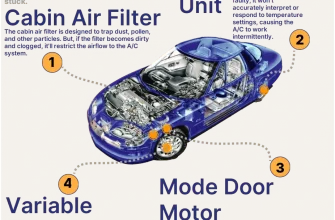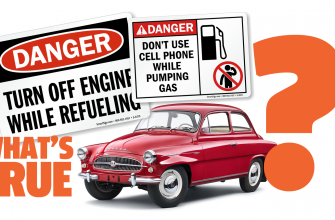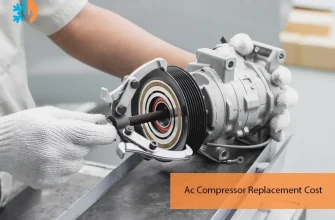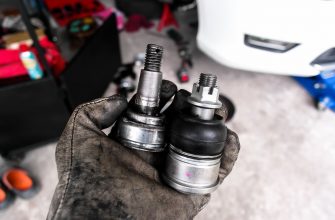When it comes to vehicle suspension systems‚ car struts play a pivotal role in ensuring both safety and comfort on the road. But what exactly are struts‚ and how do they function within the intricate architecture of a car’s suspension? In this article‚ we’ll delve deep into the world of car struts‚ exploring their components‚ functions‚ and the importance of maintaining them for optimal vehicle performance.
What Are Car Struts?
Car struts are a crucial part of the suspension system‚ particularly in modern vehicles. Unlike shock absorbers‚ which primarily dampen the oscillations of the springs‚ struts serve multiple purposes. They act as a structural component that supports the vehicle’s weight‚ absorbs road shocks‚ and helps maintain tire contact with the road surface. Essentially‚ struts are the backbone of the suspension system.
The Anatomy of a Strut
To understand how struts function‚ it’s essential to break down their components:
- Strut Assembly: This includes the strut itself‚ which houses the shock absorber and spring. Together‚ they manage the vehicle’s weight and absorb impacts from the road.
- Coil Spring: The coil spring is wrapped around the strut and is responsible for supporting the vehicle’s weight while providing a buffer against bumps and potholes.
- Mounting Hardware: This includes various bolts and nuts that secure the strut assembly to the vehicle’s chassis‚ ensuring stability and safety.
- Top Mount: The top mount connects the strut to the vehicle and allows for some degree of movement‚ which is essential for steering.
How Struts Work
Struts work in conjunction with other suspension components‚ such as control arms and anti-roll bars‚ to provide a smooth and stable ride. When a wheel encounters a bump‚ the coil spring compresses‚ allowing the strut to absorb the shock. This compression also keeps the tire in contact with the road‚ improving traction and handling. The strut’s internal damping mechanism controls the speed at which the spring expands and compresses‚ ensuring that the vehicle doesn’t bounce excessively.
Signs of Worn Struts
Over time‚ struts can wear out or become damaged. Here are some common signs that your struts may need attention:
- Excessive Bouncing: If your vehicle continues to bounce after hitting a bump‚ it’s a sign that the struts are failing to dampen the motion.
- Uneven Tire Wear: Worn struts can lead to uneven tire wear‚ as they fail to maintain proper tire contact with the road.
- Leaking Fluid: If you notice fluid leaking from the strut‚ it’s a clear indication that it may need to be replaced.
- Noise: Clunking or rattling noises when driving over bumps can suggest worn struts or loose components.
The Importance of Maintenance
Regular maintenance of your vehicle’s suspension system‚ including the struts‚ is vital for safe driving and optimal performance. Here are a few tips to keep in mind:
- Regular Inspections: Have your struts inspected at least once a year or whenever you notice any signs of wear.
- Alignment Checks: Ensure that your vehicle’s alignment is checked after strut replacement or any suspension work to prevent uneven tire wear.
- Driving Habits: Avoid potholes and rough terrains when possible‚ as they can accelerate strut wear.
Understanding car struts and their functionality is essential for any vehicle owner. By recognizing the importance of these components and staying vigilant about their maintenance‚ you can ensure a safer‚ more comfortable ride. Remember‚ a well-maintained suspension system not only enhances your driving experience but also extends the life of your vehicle. So next time you hit the road‚ give a thought to those unsung heroes—your struts!
Exploring the Types of Struts
Struts come in various types‚ each designed to cater to specific vehicle needs and performance requirements. Understanding these types can help you make informed decisions about maintenance or upgrades:
- MacPherson Struts: The most common type found in many compact and midsize cars‚ MacPherson struts combine the shock absorber and spring into a single unit. They are known for their simplicity and lightweight design‚ which contributes to better fuel efficiency.
- Double Wishbone Struts: Often used in performance vehicles and luxury cars‚ double wishbone struts offer superior handling and ride quality. This design allows for better wheel alignment and improved cornering capabilities‚ making it a favorite among driving enthusiasts.
- Coil-Over Struts: Featuring a coil spring wrapped around a shock absorber‚ these struts are adjustable and often found in aftermarket performance applications. They allow for customization of ride height and stiffness‚ making them popular in the tuning community.
Strut Replacement: When and Why?
Struts‚ like any component‚ have a finite lifespan. Typically‚ they should be replaced every 50‚000 to 100‚000 miles‚ but this can vary based on driving conditions and vehicle usage. Replacing struts is critical for several reasons:
- Safety: Worn struts can compromise vehicle stability and handling‚ increasing the risk of accidents‚ especially during emergency maneuvers.
- Comfort: New struts improve ride quality by effectively absorbing shocks and bumps‚ making for a more comfortable driving experience.
- Performance: Fresh struts enhance handling‚ cornering‚ and braking‚ allowing for better control over the vehicle.
DIY vs. Professional Strut Replacement
When it comes to replacing struts‚ vehicle owners often face a choice between DIY replacement and hiring a professional. While some may feel confident tackling the job themselves‚ it’s essential to weigh the pros and cons:
- DIY: If you have mechanical knowledge and the right tools‚ replacing struts can be a rewarding project. It can save you money on labor costs‚ but it requires time‚ effort‚ and a thorough understanding of suspension systems.
- Professional: Hiring a mechanic ensures that the job is done correctly and safely. Professionals have the expertise to diagnose related issues‚ and their work often comes with a warranty‚ providing peace of mind.
Car struts may not be the most glamorous components of a vehicle‚ but their importance cannot be overstated. They are essential for maintaining control‚ comfort‚ and safety while driving. By understanding their functionality‚ recognizing signs of wear‚ and knowing when to replace them‚ you can ensure your vehicle remains in peak condition. Struts may be hidden away‚ but they are indeed the unsung heroes of your car’s suspension system‚ quietly working to give you a smoother ride.
Whether you’re a car enthusiast or just a responsible vehicle owner‚ keeping tabs on your struts can lead to better performance‚ enhanced safety‚ and a more enjoyable driving experience. So next time you’re behind the wheel‚ take a moment to appreciate the engineering marvel that is your car’s strut system;










This piece is a must-read for any car enthusiast. The details about the anatomy of struts were particularly interesting. Well done!
I never realized how important struts are until reading this! The detailed explanation of their components was incredibly helpful. Great job!
This article provides a fantastic overview of car struts! I learned so much about their role in vehicle safety and comfort. Highly recommend!
What a comprehensive guide on car struts! I feel much more informed about my vehicle
An enlightening read! The breakdown of how struts work within the suspension system was clear and easy to understand. Thanks for sharing!
Loved this article! It made me appreciate the engineering behind car struts and their impact on driving experience. Very informative!